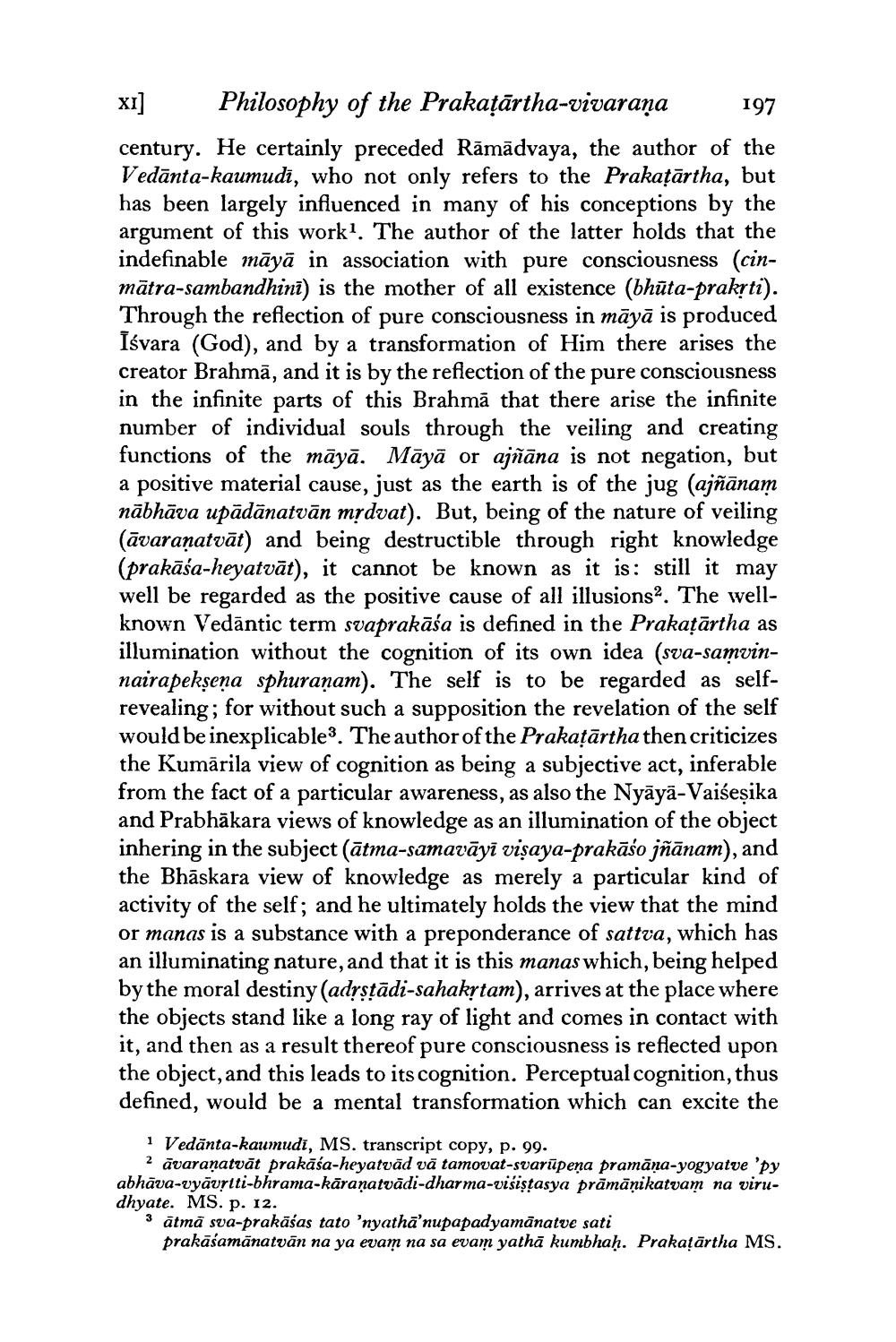________________
XI]
Philosophy of the Prakaṭārtha-vivarana
197
century. He certainly preceded Rāmādvaya, the author of the Vedānta-kaumudi, who not only refers to the Prakaṭārtha, but has been largely influenced in many of his conceptions by the argument of this work1. The author of the latter holds that the indefinable māyā in association with pure consciousness (cinmātra-sambandhini) is the mother of all existence (bhūta-prakṛti). Through the reflection of pure consciousness in māyā is produced Iśvara (God), and by a transformation of Him there arises the creator Brahma, and it is by the reflection of the pure consciousness in the infinite parts of this Brahma that there arise the infinite number of individual souls through the veiling and creating functions of the māyā. Māyā or ajñāna is not negation, but a positive material cause, just as the earth is of the jug (ajñānam nābhāva upādānatvān mṛdvat). But, being of the nature of veiling (āvaraṇatvāt) and being destructible through right knowledge (prakāśa-heyatvāt), it cannot be known as it is: still it may well be regarded as the positive cause of all illusions2. The wellknown Vedantic term svaprakāśa is defined in the Prakaṭārtha as illumination without the cognition of its own idea (sva-samvinnairapekṣena sphuranam). The self is to be regarded as selfrevealing; for without such a supposition the revelation of the self would be inexplicable3. The author of the Prakaṭārtha then criticizes the Kumārila view of cognition as being a subjective act, inferable from the fact of a particular awareness, as also the Nyāyā-Vaiseṣika and Prabhakara views of knowledge as an illumination of the object inhering in the subject (ātma-samavāyī viṣaya-prakāśo jñānam), and the Bhaskara view of knowledge as merely a particular kind of activity of the self; and he ultimately holds the view that the mind or manas is a substance with a preponderance of sattva, which has an illuminating nature, and that it is this manas which, being helped by the moral destiny (adṛṣṭādi-sahakṛtam), arrives at the place where the objects stand like a long ray of light and comes in contact with it, and then as a result thereof pure consciousness is reflected upon the object, and this leads to its cognition. Perceptual cognition, thus defined, would be a mental transformation which can excite the
1 Vedanta-kaumudi, MS. transcript copy, p. 99.
2 āvaraṇatvāt prakāśa-heyatvād vā tamovat-svarūpeṇa pramāṇa-yogyatve 'py abhāva-vyāvṛtti-bhrama-kāraṇatvādi-dharma-visiṣṭasya prāmānikatvam na viru
dhyate. MS. p. 12.
3 ātmā sva-prakāśas tato 'nyatha'nupapadyamānatve sati
prakāśamānatvan na ya evam na sa evam yatha kumbhaḥ. Prakaṭārtha MS.




